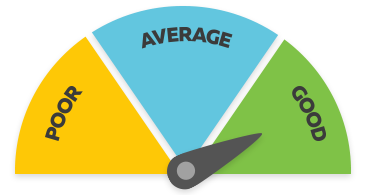Information Technology Architect
Kaihoahoa Hangarau Pārongo
Alternative titles for this job
Information technology (IT) architects analyse an organisation's IT needs, recommend solutions and oversee their delivery and implementation.
Pay
IT architects usually earn
$140K-$200K per year
Source: Absolute I.T., Recruit I.T., 2022.
Job opportunities
Pay
Pay for information technology (IT) architects varies depending on experience, responsibility and where they work.
- IT architects usually earn between $140,000 and $200,000 a year.
- Chief IT architects and IT architect managers can earn more than $200,000.
Sources: Absolute I.T., ’IT Job Market and Remuneration Report 2022’; Recruit I.T., ‘Technology & Digital Salary Update, Auckland, December 2022’; and Recruit I.T., ‘Technology & Digital Salary Update, Wellington, December 2022’.
(This information is a guide only. Find out more about the sources of our pay information)
What you will do
IT architects may do some or all of the following:
Analyse business needs and recommend IT solutions
- analyse organisations' business needs and use of information technology
- provide detailed information about costs and benefits of various IT solutions
- recommend suitable solutions including systems, programs and hardware
- create architectural plans which outline the structure of new applications.
Oversee the design, build and implementation of new applications
- oversee the development and building of new computing solutions
- oversee teams who test, review and fix any problems with new systems
- ensure that people understand how to use new systems, including developing training plans and manuals.
Skills and knowledge
IT architects need to have knowledge of:
- computing trends and new IT technology
- how IT can be used in a business strategy
- how to estimate project costs
- how to understand and analyse their client's business.
Working conditions
IT architects:
- usually work regular business hours, but may have to work evenings and weekends to meet project deadlines
- usually work in offices, but may travel locally to meet clients and work on projects
- may travel nationally or overseas to attend seminars and conferences.
What's the job really like?
Clive Trott
Information Technology Architect
Clive Trott has some advice for anyone aspiring to be an IT architect – learn all you can about business management.
"Don't just do a degree in IT. Combine it with business courses."
People skills and technical skills go hand in hand
According to Clive, it's this dual focus that's been the biggest help to his career. "It's just as important to be able to talk with business people and understand their needs as well as provide IT developers with the technical details to make things happen.
"Team leadership skills are also important as you will be working on projects and have to direct and lead teams of developers."
Experience helps you plan and create unique solutions
"You're planning what has to happen at every level of an organisation's computer system so it's important to be familiar with the pros and cons of many different systems," Clive says.
You get this, he explains, through having broad experience in the industry, which in turn helps you develop unique and workable solutions.
"When you conceptualise a solution and figure out what you're going to do, and how, and make all of the different applications work together – it's a good feeling."
Information technology architect video
Martin Brennan explains what his job as an IT architect involves – 1.40 mins
So, an architect is responsible for defining the high level solution when a solution is more complex than just one application, they are also responsible for setting strategy and direction in technology.
My role is integration architect – I set strategy for integration within the bank and that involves defining technical standards, to design principles and then guiding people as they implement those standards.
So a lot of the role is an education piece, so face to face in meeting rooms with whiteboards; but we also use tools like Visio and Spark EA and other diagramming tools to try and get the message across, so that everybody understands it the same.
So I have a few technical hobbies – I like to keep learning and expanding my technical skills but I also like to box. About a year ago I was 105 kilos, I was really unfit and my mentor said why not get involved in a charity boxing event. So I trained, I lost a lot of weight – 26 kilos in total. And I learnt to box, and got in the ring and had a fight for charity.
Entry requirements
There are no specific requirements to become an information technology (IT) architect. However, you usually need:
- a tertiary qualification in a computer-related field such as information systems and/or a tertiary qualification in a business-related field
- at least 10 years' experience in information and communication technology, such as software development or data analysis, including work in a senior position.
Secondary education
A tertiary entrance qualification is required to enter further training. Useful subjects include digital technologies, maths and English.
For Year 11 to 13 students, the Gateway programme is a good way to gain industry experience.
Information about Gateway and other work experience programmes
Personal requirements
IT architects need to be:
- able to lead others
- able to work through problems logically and methodically
- good at analysis
- creative and adaptable
- able to work well under pressure to meet deadlines
- skilled at oral and written communication, with good presentation skills.
Useful experience
Useful work experience for IT architects includes:
- work in a software development role
- computer systems management experience
- general business and project management experience.
Useful basic work experience includes:
- work in entry-level IT jobs such as information technology helpdesk/support technician
- on-the-job training through IT internships and graduate recruitment programmes
- hacking experience gained through study or hacking conferences.
Physical requirements
IT architects spend a lot of time using computers, so they need to know how to use computer equipment properly to avoid occupational overuse syndrome (OOS).
Registration
IT architects may choose to become certified through associations such as the Institute of IT Professionals.
They may also take certification exams such as The Open Group Architecture Framework (TOGAF).
- IT Professionals website - information on IT architect certification
- Open Group Architecture Framework website - information about The Open Group Architecture Framework (TOGAF)
Find out more about training
- IT Professionals NZ
- 0800 252 255 - info@itp.nz - www.itp.nz
- NZ Tech
- (09) 475 0204 - info@nztech.org.nz - www.nztech.org.nz
What are the chances of getting a job?
Information technology architects in demand
Information technology (IT) architects are in high demand due to:
- organisations rely on computer systems and networks to operate effectively, and need IT architects to plan their overall systems
- more organisations are moving their IT systems to cloud technology which requires IT architects.
Shortage of experienced IT architects
There are not enough IT architects to meet demand. Nearly two thirds of IT employers report skills shortages, and there aren't enough information technology (IT) trainees.
As a result, software engineer (IT architect) appears on Immigration New Zealand's long-term skill shortage list. This means the Government is actively encouraging skilled IT architects from overseas to work in New Zealand.
According to the Census, 14,298 information technology architects worked in New Zealand in 2018.
How to get your first IT job
Improve your chances of getting a job through:
- internships like Summer of Tech
- graduate programmes offered by IT companies
- mentoring programmes.
Types of employers varied
IT architects work for medium to large organisations, including:
- companies that provide computer, database and network services to clients
- software and web development companies that produce film, games and animation
- marketing and advertising companies
- government departments.
About 8% of IT architects are self-employed.
Sources
- AbsoluteIT, 'Tech Remuneration Report', February 2021, (www.itsalaries.co.nz).
- Hays, 'IT Salary Guide and Recruiting Trends', accessed November 2021, (www.hays.net.nz)
- Immigration New Zealand, 'Long Term Skill Shortage List', 27 May 2019, (www.immigration.govt.nz).
- Stats NZ, '2018 Census Data', 2019.
(This information is a guide only. Find out more about the sources of our job opportunities information)
Progression and specialisations
IT architects may progress to set up their own consultancy business, or move into roles such as chief information officer, information technology manager, or project manager.
Last updated 25 September 2023


